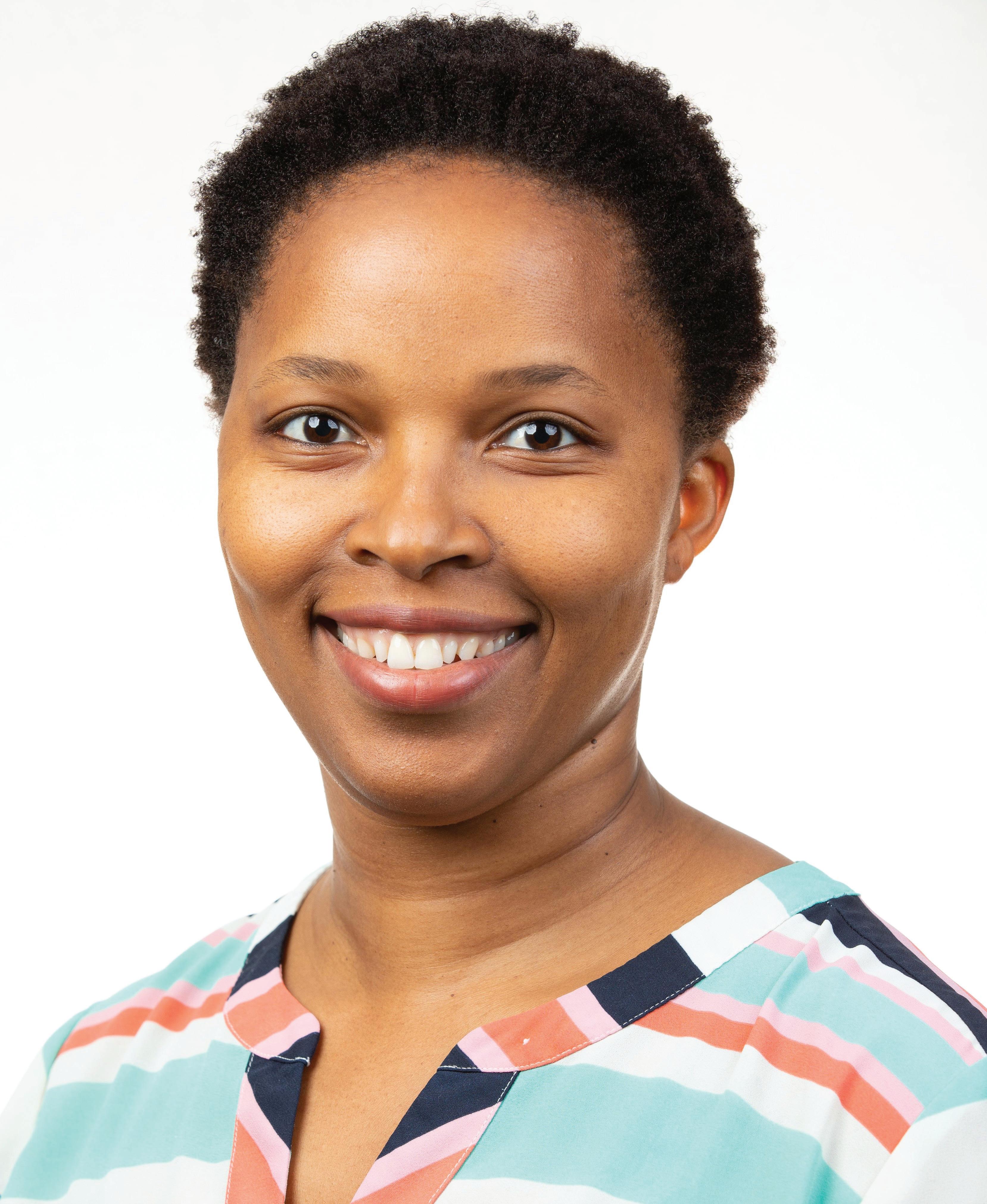
6 minute read
Sibongile Manthata
Pioneering apathway to diversity
Aimee Kalnoskas • Contributing Editor
As one of the only women in her highly specialized field as a process design engineer, a South African immigrant, woman of color, and mother of four boys, Sibongile Manthata has had more than her fair share of challenges in her career. And her entre into engineering was more accidental than intentional.
“I heard about engineering but knew very little about it,” she said. “Fortunately, one of my friend’s sisters was a new chemical engineer, and I thought I would do well in it.”
With that in mind and encouraged by the many engineering bursaries (scholarships) available in South Africa, she focused on keeping up her grades and applying for engineering school. The lack of family support only made her more determined to pursue an engineering education. “Were it not for the initial encouragement from my friend’s sister,” she noted, “I probably would not have applied to engineering school. My grandma’s husband even made it a point to say that engineering was only for men. This stigma helped motivate me to challenge myself and prove it wrong.” But inspiration and support did come once Sibongile got into engineering school. A female lecturer, Dr. Diane Hildebrandt, was the sole female professor in her school. Dr. Hildebrandt was well-recognized in her field and had received multiple awards for her work – yet another motivator for the budding engineer. “We get inspired seeing ourselves in the people we want to become,” Sibongile said.

Sibongile Manthata

Staff Scientist, Saudi Basic Industries Corp. (SABIC)
Coder Barbie? Engineer Barbie?
Sibongile has never forgotten that positive influence and sees mentorship and female leadership as critical factors in promoting greater participation of young women in engineering today.
“I know how much it means for me to see female professors in university give lectures at both the graduate and undergraduate levels. Representation really matters. It is important to see role models that look like you while advancing and starting your career. However, this could be taken a step further – we need to inspire girls at an earlier age. We should encourage them to find a passion for science education at the elementary school level. This
also means marketing science in new ways, too, and breaking gender stereotypes. For example, we should show that Barbie wants to be an engineer or learn how to code. We should also set a new standard that girls can be both a cheerleader and a scientist. The two are not mutually exclusive.”
And what can women bring to the engineering lab, benchtop, meeting-room table? The move towards inclusion and diversity in engineering is more than a catchphrase for Sibongile – it’s a recipe for project success.
“When you have all similar experiences,” she said, “you may miss a solution or idea because you haven’t come across it in your experiences. Team members with diverse backgrounds can bring broader perspectives to the table – they can look at problems through a new lens and provide different solutions.”
Elaborating upon her real-life example, Sibongile remembers a project she became involved in after the team was established where a different perspective resulted in success.
“I once worked on a challenging project handling a catalyst,” she recalls, “Before I joined, the team sought out many solutions but hadn’t landed on the idea that was most beneficial. Because of my background experience, I saw an opportunity to revisit a solution previously proposed and recommended it to the team in a different way. Once we started looking at the project with this new perspective in mind, we were able to successfully find a solution that is still being used today. I think having a new team member with a diverse background encouraged my colleagues to think even further outside the box and approach problem-solving in a new way.”
She frankly acknowledges that women can and do bring a different perspective than men, not only to engineering but to any organization or team.
“Women make great leaders,” she said. “We are creative and adaptive. I find my personal experience with balancing work, children, and household activities has only brought me success. I don’t think women should have to do everything or be superhuman by any means, but with many of us juggling multiple roles in a day, it typically allows us to be nimble and strategic, especially in our careers. We learn to think multidimensionally, which prepares us as great project managers and quick-solution finders.”
Fear not the mistakes
In general, mistakes have had distinct undertones of “failure” – a term which, in itself, carries a negative connotation. Like many other successful people, Sibongile sees mistakes as eventual progress with a generally positive outcome.
“I do not think people should be afraid to make mistakes; it is often the best way to learn,” she maintains. “Building confidence requires you to try, and sometimes when you try, you fail. The key is to learn from those mistakes and understand that you will always be learning. As an engineer, you should aim to start your career by learning from those around you. Your college career has provided you with an excellent opportunity to prove to yourself that you can master this field. You should approach problems by trying them first and then asking a coach (usually a person that has been there a little longer than you have) to check them or check your logic.”
Dare to “can-do”
Despite South Africa’s complicated history, there have been women of color in influential roles – something you would expect from a country


that is 80 percent black. However, it was something Sibongile took for granted until she came to the United States. But that could not dissuade her, and she is passionate about showing her four boys that there are no boundaries for women, particularly women of color. To allow any apparent limitations you encounter to do so would be to deny yourself not only an exciting and promising career, she maintains, but also the satisfaction of seeing the fun of something on paper come to life and work.
“Whether you design a solution to start up or a pump or create a new facility design that becomes operational,” she says, “the feeling is thrilling.”
For Sibongile, obstacles are something to be attacked, not to run away from.
“Being a black female engineer has meant that not only have people found prejudice based on the color of my skin but also because I’m a woman in what’s stigmatized as a “man’s field.” If I can be successful and good at what I do, anyone can do this. You need to have a can-do attitude and dare to dream. Never let other people’s limitations define yours.”
THE WOMEN IN ENGINEERING CHAT SERIES

The Women in Engineering Chat Series from Design World is a collection of webinars about female engineers who are positively influencing the culture of engineering — as well as design technologies and engineering practices.

Register now for past and future WOMEN IN ENGINEERING Webinars

wtwh.me/womenengineering









